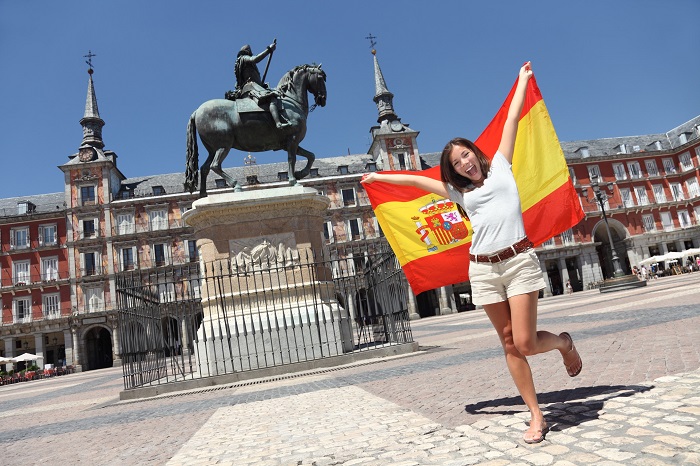
Spanish for tourists: discovering a new wonderful experience
Hispanic countries are the perfect destinations for tourists. Those nations combine diverse rich cultures and unique people. Plus, they master a language that influences 442 million of native speakers, (non-native speakers arrive at 100 million), and that is the third most popular language on the Internet.
The tourists that master Spanish can experience the Hispanic experience, and acquire the linguistic heritage proper of native speakers, surpassing linguistic boundaries. Tourists that speak and love Spanish have the capacity to appreciate the cultural roots as a local citizen.
Spanish is the official language of Argentina, Bolivia, Chile, Colombia, Costa Rica, Cuba, Dominican Republic, Ecuador, El Salvador, Equatorial Guinea, Guatemala, Honduras, México, Nicaragua, Panamá, Paraguay, Perú, Spain, Puerto Rico, Uruguay, and Venezuela. Despite the fact that all of those countries are Hispanics, each one of those nations has particular qualities that attract thousands of tourists each year.
Excellent gastronomy, sports, pieces of art, family expeditions, unique public spaces, etc. Tourists are always looking for the best places to experience those main activities, but Hispanic countries offer even more.
A wonderful culture
Hispanic countries' unique and ancient cultures are very special. In fact, they gather two of the New Seven Wonders of the World, the humanity's most venerable creations: the Mayan city of Chichén Itzá (located on the Yucatán Peninsula, México), and the pre-Columbian site of Machu Picchu, in Cuzco, Perú. Those two wonders demonstrate the architectural, astronomical, agricultural and geometrical skills of the ancient civilizations that, in the present day, are Hispanic communities.
Together with the architectural wonders, there are also natural wonders all over the Hispanic lands. According to the CNN's 'Seven Natural Wonders of the World ' list (1997), México also possess a natural invaluable piece, which is the famous Volcán de Paricutín (Michoacán), the youngest volcano of America. The cone-shaped volcano came up on February 21st, 1943 and the event was fully recorded.
Moreover, the 'New Seven Natural Wonders', an initiative by Bernard Weber and the New 7 Wonders Foundation, includes Amazonia, the largest tropical forest in the world, which extends its vegetation across Bolivia, Brazil, Colombia, Ecuador, Guyana, Perú, Surinam and Venezuela. Plus, the Cataratas Del Iguazú (that are divided between Argentina and Brazil), are also part of the prestigious poll. Some honourable mentions are El Salto Ángel (Venezuela), and Caño Cristales (Colombia).
Finally, the website sevennaturalwonders.org adds, to the list, the tallest mountain of the South American continent, knows as Aconcagua (Argentina). Other astonishing wonders are Salar de Uyuni, a salt flat in Bolivia, and the Atacama Desert, located in Chile.
©TranslatorPub.com 2025 All Rights Reserved.
Mail comments and suggestions to [email protected]
| Privacy Policy
| Sitemap.




